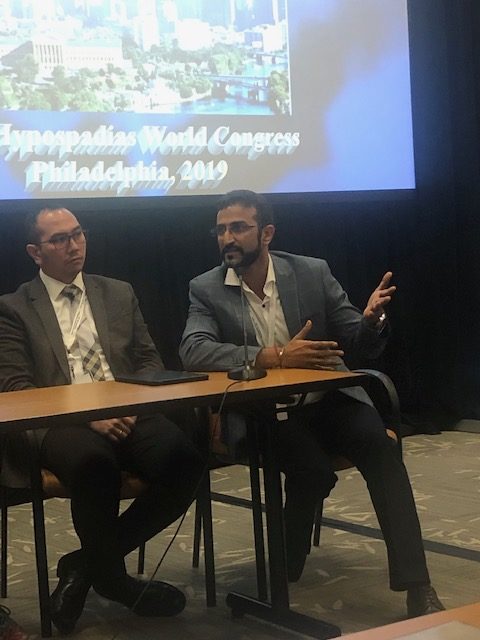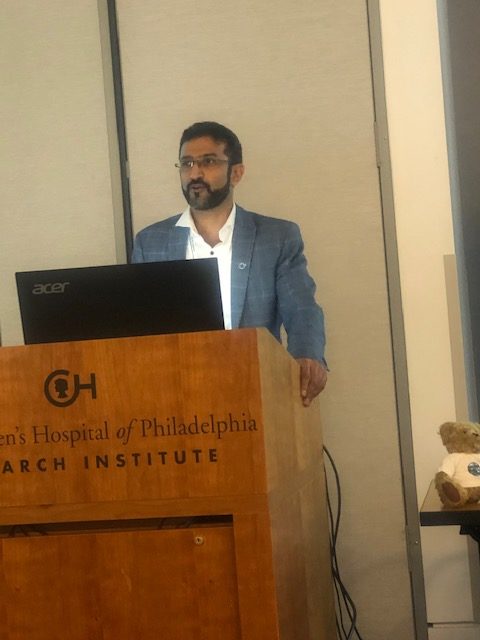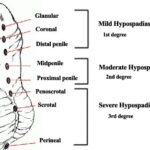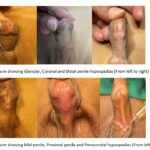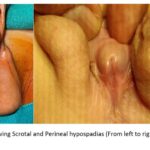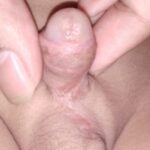How is Hypospadias diagnosed?
Hypospadias should be suspected in a newborn when the prepuce is incomplete, meatus is on underside and there is bent penis (chordee). Ideally, a pediatrician should be able to clearly diagnose hypospadias clinically at birth. In some cases, there may be doubt especially in minor hypospadias. In such cases, it may be good to consult a pediatric urologist or a surgeon around 3-6 months of age.
When do you suspect DSD?
DSD is suspected when the hypospadias is severe (Scrotal or perineal), when hypospadias is associated with small size of the penis (microphallus) or when the hypospadias is associated with one sided or both sided undescended testes. In such cases investigations in the form of karyotyping and hormonal evaluation is necessary.
When should a child with hypospadias be referred to a pediatric urologist or a pediatric surgeon?
In children with isolated hypospadias, the ideal age for a surgeon to see them is around 3-6 months of age. For children with suspected DSD or small phallus or associated undescended testis, patients should be referred in the first 2-3 weeks of age itself for hormonal and DSD evaluation.
What is the ideal age for surgery for Hypospadias?
We recommend Hypospadias repair in boys between 6months to 15 months of age if they have a good weight and there is no other congenital anomaly. In some preterm babies or babies with a delayed growth, other anomalies – a second window of opportunity is between 3-5 years of age.
What are the Goals of Hypospadias surgery?
Good functional and cosmetic outcome in form of a straight penis, normally located urinary opening at tip of penis, ability to pass urine like a normal child with thick single forceful stream.
Do all Hypospadias need surgery?
Minor hypospadias like glanular hypospadias and coronal hypospadias can be left alone if the meatus is of good caliber, urine flow is in good stream & forwardly directed and there is no chordee. Otherwise, all hypospadias which are distal penile or more proximal in location or have any chordee should be repaired.
What are the tests needed before Hypospadias surgery?
For isolated hypospadias- only simple blood tests and fitness assessment are required before surgery. If there are any associated abnormalities like undescended testis then further detailed testing may be required to rule out DSD. Hormonal tests may be required if the size of the penis is small for age.
How is the Hypospadias surgery done?
Hypospadias requires a corrective surgery called Urethroplasty which involves- correction of penile curvature (Chordee) and creation of new urethra (neourethra) to the tip of penis. Many different techniques for surgery are available and a particular technique is used based on the type of hypospadias/ severity of defect. Some children may require pre-operative hormone injections to improve the size of penis and facilitate and improve surgical results.
Is the surgery done in a single stage or requires multiple stages?
The deciding factor for single or staged repair is the severity of chordee. In cases of mild chordee single stage repair is possible. Complication rates of single stage surgery are less than 10% in good centres such as Hypospadias Foundation and less than 5% may need a second surgery. Staged Hypospadias repair remains an option in very severe hypospadias and those with very severe chordee but such cases constitute less than 10% of all cases.
What is chordee correction and why is it essential?
Chordee is defined as abnormal ventral curvature of the penis. Chordee when left uncorrected or partly corrected can result in painful erection and difficult sexual intercourse. As a first step of any hypospadias surgery, chordee assessment is done after complete degloving. Based on the degree of chordee various methods are followed for chordee correction. The various methods include dorsal tunica albuginea plication, urethral plate division and proximal urethral mobilization, fairy cuts, corporotomies and in severe cases of chordee, a dermal graft for ventral penile lengthening may be required.
What is a post-surgery course and follow-up?
Most of the children are discharged on the same day in the evening after surgery. Some children with severe hypospadias or failed previous surgeries elsewhere may require 1-2 days hospital stay for antibiotic injections and pain relief. Typically, we train the parents to take care of the catheter in a double diaper fashion so that there is no urine bag hanging out. We do not advise any bed rest and children are free to walk around and play the next day of surgery.
At the time of discharge – an antibiotic syrup, analgesic (pain killer) and a medicine to control bladder spasms is commonly prescribed. Dressing is normally removed on day 7 and catheter on day 7-10 depending on the type of repair. After that a follow up visit is needed at 1 month/ 3 months and 1 year after surgery. We also like to see the children at 7-8 years and 12-15 years of age.
What surgeries are done for failed hypospadias?
In expert hands the rate of complications should be less than 10%. The common complications which can occur after hypospadias repair are urethrocutaneous fistula, urethral diverticulum, recurrent chordee and glans dehiscence. There are good techniques available to correct these complications. In children with failed hypospadias after multiple failed surgeries, oral mucosa graft urethroplasty is an option. At hypospadias foundation the results of oral mucosa graft repair are excellent with minimal complications.
Does hypospadias cause infertility?
Isolated hypospadias has not been known to be associated with infertility. Sperm counts of children who were operated on in childhood were shown to be normal. If there is associated undescended testis, then chances of infertility are higher in men with a history of hypospadias. Also, in men with chordee, intercourse may pose technical challenges, hence chordee correction is a must to provide long term normal sexual function.
